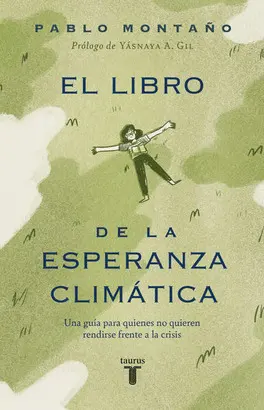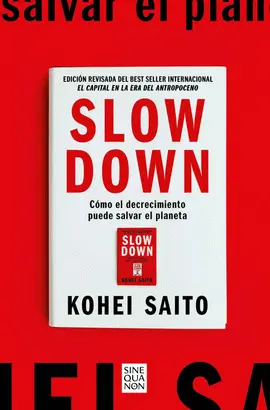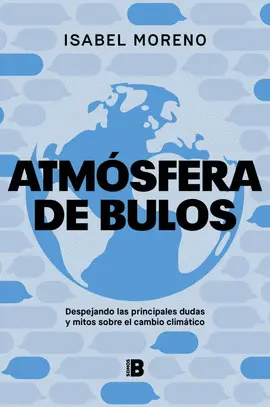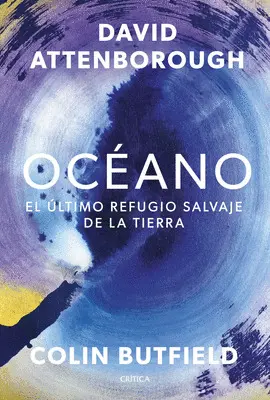- Editorial:
- CAMBRIDGE UNIVERSITY PRESS
- Materia:
- Ciencia - STEM
- ISBN:
- 978-1-107-41478-5
GEOMORPHOLOGICAL HAZARDS AND DISASTER PREVENTION
IRASEMA ALCANTARA AYALA / ANDREW GOUDRE
Review Quotes:
' surely one of the most relevant and timely Earth science texts for the early 21st century given the rapidity of current global climate change and predicted increase in associated natural disasters and infrastructural consequences. This comprehensive text on hazards brings fresh relevance and application to geomorphology and is an essential read for environmental consultants, land managers and scholars in Earth and environmental science.' Professor Stefan Grab, University of the Witwatersrand"
Review Quotes:
This book provides a comprehensive guide to the role of geomorphology in hazard and risk analysis. It presents an excellent and wide-ranging review of hazards and how society can respond and attempt to manage them ... It brings together an impressive group of authors with international reputations in their various fields of geomorphological research. Professor Tim Burt, Durham University"
Review Quotes:
excellent exposition and state-of-the-art analyses of geomorphic hazards for better understanding and prevention of disasters. Alcantara-Ayala and Goudie are to be commended for their selection of topics and choice of so many prominent geoscientists to contribute chapters. Their book sets a high standard in focused analysis of diverse geomorphic hazards. Professor John (Jack) Shroder, University of Nebraska at Omaha"
Review Quotes:
."..a comprehensive and engaging look at the many issues surrounding the understanding of climate and the difficulty of changing people s habits." Natural Hazards Observer"
Brief Description:
A state-of-the-art assessment of how geomorphology contributes to the comprehension, mapping and modelling of hazardous Earth surface processes.
Review Quotes:
'Brings together a broad range of research in a well written, comprehensively illustrated and accessible format, covering all of the major events that threaten human activity and life. An excellent synthesis for geomorphologists, the wider Earth Science community, engineers, planners and other decision makers.' Professor Robert J Allison, University of Sussex
Review Quotes:
."..overall the book contains much valuable information. Production quality is excellent, with many grayscale drawings and photos. There is a good index, and the layout is very readable. This book would be excellent for use in an upper-level/graduate course on geologic hazards as the concise chapters lend themselves to such (two chaptes per week, for example). But the book also has merit as a reference or learning tool." I.D Sasowsky, University of Akron
Review Quotes:
."..the book contains much valuable information. Production quality is excellent, with many grayscale drawings and photos. There is a good index, and the layout is very readable ...Highly recommended." CHOICE
Review Quotes:
'surely one of the most relevant and timely Earth science texts for the early 21st century given the rapidity of current global climate change and predicted increase in associated natural disasters and infrastructural consequences. This comprehensive text on hazards brings fresh relevance and application to geomorphology and is an essential read for environmental consultants, land managers and scholars in Earth and environmental science.' Professor Stefan Grab, University of the Witwatersrand"
Table of Contents:
List of contributors; 1. Introduction Andrew S. Goudie; Part I. Processes: 2. Regional seismic shaking hazards in mountains William B. Bull; 3. Volcanic hazards and risks: a geomorphic perspective Jean-Claude Thouret; 4. Mountain hazards Olav Slaymaker; 5. Review and future challenges in snow avalanche risk analysis Michael Bruendl, Perry Bartelt, Margreth Keiler and Thomas Glade; 6. Landslide hazards David Petley; 7. Catastrophic landslides and sedimentary budgets Monique Fort, Etienne Cossart and Gilles Arnaud-Fassetta; 8. Landslides and climactic change Lisa Borgatti and Mauro Soldati; 9. The hazardness of high-magnitude floods Avijit Gupta; 10. Flood hazards: the context of fluvial geomorphology Gerardo Benito and Paul F. Hudson; 11. Geomorphology and coastal hazards Harley Jesse Walker and Molly McGraw; 12. Weathering hazards Andrew S. Goudie and Heather Viles; 13. Hazards associated to Karst Francisco Gutierrez; 14. Soil erosion Andrew S. Goudie and John Boardman; 15. Desertification and land degradation in arid and semi-arid regions Yang Xiaoping; 16. Dune migration and encroachment Andrew S. Goudie; Part II. Processes and Applications of Geomorphology to Risk Assessment and Management: 17. GIS for the assessment of risk from geomorphological hazards Cees J. van Westen; 18. Hazards assessment for risk analysis and risk management Michael Crozier and Thomas Glade; 19. Vulnerability analysis in geomorphic risk assessment Gabi Hufschmidt and Thomas Glade; 20. Geomorphological hazards and global climate change Andrew S. Goudie; 21. Geomorphic hazards and sustainable development David Higgitt; 22. Geomorphology and disaster prevention Irasema Alcantara-Ayala; 23. Concluding remarks: geomorphology and the international agenda Irasema Alcantara-Ayala; Index."
Review Quotes:
..".overall the book contains much valuable information. Production quality is excellent, with many grayscale drawings and photos. There is a good index, and the layout is very readable. This book would be excellent for use in an upper-level/graduate course on geologic hazards as the concise chapters lend themselves to such (two chaptes per week, for example). But the book also has merit as a reference or learning tool." I.D Sasowsky, University of Akron
Review Quotes:
..".a comprehensive and engaging look at the many issues surrounding the understanding of climate and the difficulty of changing people s habits." Natural Hazards Observer"
Review Quotes:
..".the book contains much valuable information. Production quality is excellent, with many grayscale drawings and photos. There is a good index, and the layout is very readable ...Highly recommended." CHOICE
Contributor Bio: Goudie, Andrew S
Professor Andrew Goudie was Professor and Head of Department of Geography at Oxford University. A distinguished physical geographer, he was awarded a DSc by Oxford University, received a Royal Medal from the Royal Geographical Society, the Prize of the Royal Belgian Academy, the British Society for Geomorphology's David Linton Award (2009) and the Geological Society of America's Farouk El-Baz Award for Desert Research. He has been President of the Oxford University Development Programme, Pro-Vice-Chancellor of the University, and Delegate of Oxford University Press. He has been President of the Geographical Association, President of Section E of the British Association and Chairman of the British Geomorphological Research Group. Professor Goudie became Master of St Cross College, Oxford, in October 2003, and continues to lecture at Oxford University Centre for the Environment. Since 2005 he has been President of the International Association of Geomorphologists. In addition to being author of nearly 200 scientific papers, he is the author or co-author of the following books (amongst others): The Human Impact, The Nature of the Environment, Environmental Change, The Encyclopedia of Global Change, Geomorphology of Deserts, Geomorphological Techniques, Chemical Sediments and Geomorphology, The Geomorphology of England and Wales, The Warm Desert Environment, Discovering Landscape in England and Wales, Landshapes, The Encyclopedic Dictionary of Physical Geography, Desert Geomorphology, The Student's Companion to Geography, The Physical Geography of Africa, The Earth Transformed, Aeolian Environments, Sediments and Landforms, The Encyclopedia of Geomorphology, Global Environments through the Quaternary, The Oxford Companion to Global Change and Wheels across the Desert.








